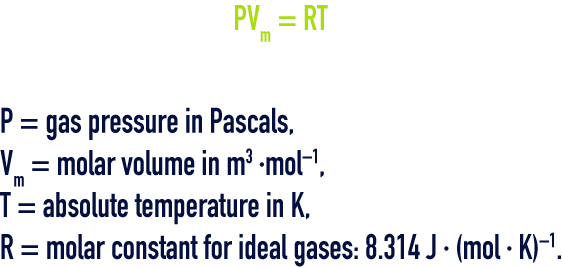



Specific heat capacities are also listed on a per K or a per ☌ basis. In fact, it requires twice as much heat to cause the same temperature change in twice the mass of water.
#Thermodynamics calculator water steam ice physics full#
This is because the full pot of water must absorb more heat to result in the same temperature change. One quickly notices that it takes considerably more time to bring a full pot of water to a boil than to bring a half-full of water to a boil. This temperature change is achieved by the absorption of heat from the stove burner. To bring a pot of water to a boil, its temperature must first be raised to 100☌. Water boils at 100☌ at sea level and at slightly lowered temperatures at higher elevations. Any person who has boiled a pot of water on a stove, undoubtedly know this truth. The fact that they are listed on a per amount basis is an indication that the quantity of heat required to raise the temperature of a substance depends on how much substance there is. Occasionally, the value is listed on a per mole basis, in which case it is called the molar heat capacity. Heat capacities are listed on a per gram or per kilogram basis. This is because the specific heat capacity of aluminum is nearly twice the value of iron. In fact, it would take about twice as much heat to increase the temperature of a sample of aluminum a given amount compared to the same temperature change of the same amount of iron. This means that it would require more heat to increase the temperature of a given mass of aluminum by 1☌ compared to the amount of heat required to increase the temperature of the same mass of iron by 1☌. The specific heat capacity of solid aluminum (0.904 J/g/☌) is different than the specific heat capacity of solid iron (0.449 J/g/☌). Simply type in the name of a substance (aluminum, iron, copper, water, methanol, wood, etc.) and click on the Submit button results will be displayed in a separate window. Use the widget below to view specific heat capacities of various materials. Standard metric units are Joules/kilogram/Kelvin (J/kg/K). Specific heat capacities of various materials are often listed in textbooks. The specific heat capacity refers to the amount of heat required to cause a unit of mass (say a gram or a kilogram) to change its temperature by 1☌. Different materials would warm up at different rates because each material has its own specific heat capacity. Will the objects warm up at equal rates? The answer: most likely not. Suppose that several objects composed of different materials are heated in the same manner. In this part of Lesson 2, we will investigate the question How does one measure the quantity of heat gained or released by an object? And when work is done, there is an overall transfer of energy to the object upon which the work is done. A change in state is associated with changes in the internal potential energy possessed by the object. A change in temperature is associated with changes in the average kinetic energy of the particles within the object. When gained or lost by an object, there will be corresponding energy changes within that object. Heat gains or losses result in changes in temperature, changes in state or the performance of work. On the previous page, we learned what heat does to an object when it is gained or released.


 0 kommentar(er)
0 kommentar(er)
